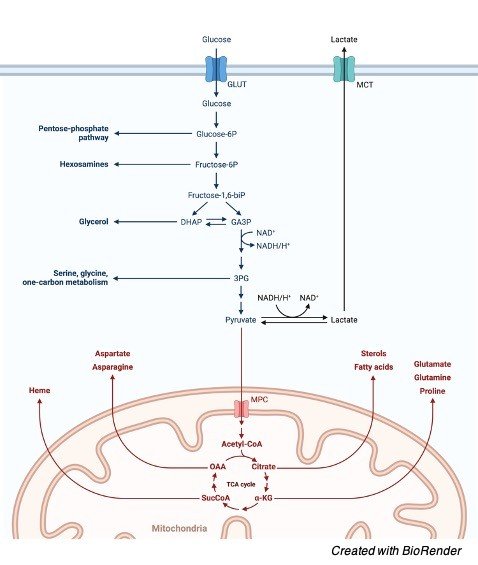Krebs Cycle
- Have you ever imagined why living system (plants) synthesize food?
- From where do they get energy?
- Why we consider them as living organisms?
The answers for all these questions comes in a simple way that we all need food, comparing from smaller fishes to giant whale every living organism in this world cannot survive without food.
So, it is important for plants too to synthesize their own food.
From Where do We Get Energy?
We all know that energy comes from carbohydrates, which is present in the form of starch in every food material we consume.
During respiration the food materials are degraded or oxidized, and energy is released in the form of biological substance known as ATP namely Adenosine Triphosphate.
The energy released is utilized for various activities by the cells. Along with ATP, carbon dioxide and water is also formed during the process of respiration.
C6H12O6 + 6O2 6C02 +6H2O +2900KJ energy (ATP)
These substances which are generally used in the respiratory process is known as respiratory substrate.

Types of Respiration
Based on the presence or absence of oxygen the respiration is categorized into two types as
1. Anaerobic respiration
2. Aerobic respiration.
1. Anaerobic respiration
Anaerobic respiration is respiration using electron acceptors other than molecular oxygen (O2).
Anaerobic cellular respiration and fermentation generate ATP in very different ways
2. Aerobic respiration
Mostly in every living being’s oxygen is necessary for their respiration, such mode of respiration which utilizes or need oxygen for their respiration are known as aerobic respiration.
Aerobic respiration takes place in four stages as listed below
1. Glycolysis
2. Oxidative decarboxylation of pyruvic acid
3. Krebs’s cycle
Here, Krebs cycle plays an important role in conversion of pyruvic acid into carbon dioxide and water in cells mitochondria, which is known as power house of the cell.
What is Krebs Cycle?
Krebs cycle was first described by Adolf Krebs’s in 1937 by explaining the catalytic conversion of pyruvic acid for the synthesis of energy in the cell.
It is also commonly known as citric acid cycle or tricarboxylic acid cycle.
Hence the cyclic reactions which are involved in the conversion of pyruvic acid into carbon dioxide and water is known as Krebs cycle.
Mechanism of Krebs Cycle
In the first step of Krebs cycle, single molecule of acetyl co-A combines with oxaloacetic acid, which results in the formation of citric acid.
It is regulated by the enzyme citric acid synthetase. Citric acid contains three carboxylic acid groups.
In the second step citric acid loses H20 (water) which results in dehydration and leads to the formation of cis-aconitic acid in the presence of an enzyme aconitase.

In the third step, the Isocitric acid is formed by the catalyzation of the same enzyme aconitase, by adding one molecule of water to the citric acid.
Where citric acid, cis-aconitic acid and Isocitric acid contains three carboxylic groups. Hence this cycle has its other name, tricarboxylic acid cycle.
Following the formation of isocitric acid, isocitric acid is decarboxylated oxidatively to form α- ketoglutaric acid.
During this reaction catalyzation occurs with the help of the enzyme Iso-citric dehydrogenase, which results in the formation of NADH2 along with α-ketoglutaric acid.
In the next step α-ketoglutaric acid is oxidatively decarboxylated to form Succinyl Co- A by the catalyzation of an enzyme α-ketoglutaric dehydrogenase.
The energy released during this process is conserved in NADH2.
The obtained Succinyl Co-A is hydrolyzed by the presence of the enzyme Succinyl Co-A synthetase which results in the formation of Succinic acid.
During this reaction ADP is phosphorylated to form ATP. This kind of phosphorylation is said to be Substrate level phosphorylation.
After the formation of succinic acid, it is oxidized with the help of the enzyme succinic dehydrogenase to form fumaric acid where FADH2 is obtained by reduction of FAD+ In the next step, fumaric acid is catalyzed by the enzyme fumarase which results in the formation of malic acid.
And here comes the last process of citric acid cycle, where malic acid is converted into oxaloacetic acid by the oxidation of an enzyme malic acid dehydrogenase, at this same time NAD+ is reduced to NADH2.
Significance of Krebs Cycle
As we said earlier Krebs cycle or citric acid cycle plays a very important role in the aerobic respiration as it acts as a main source of energy for the cells.
During the process of Krebs cycle 2 molecules of acetyl co-A are added which as a result of regular oxidation produces 6NADH2, 2FADH which on passing into electron transport chain generates 22 ATP molecules.
In one of the process of Krebs cycle, 2 ATP molecules are generated in Substrate level phosphorylation.
During Krebs cycle; whenever 2 molecules of acetyl co-A entered, 2 molecules of ATP are generated. So, it is also considered as an important energy producing system.
Krebs cycle comprises of both anabolic and catabolic processes, so it is also known as amphibolic process.
Glycolysis : Summary, Reactions, Phases, Regulation
Krebs Cycle Citations
- Modelling the Krebs cycle and oxidative phosphorylation. J Biomol Struct Dyn . 2014;32(2):242-56.
- Activity of Krebs cycle enzymes in mdx mice. Muscle Nerve . 2016 Jan;53(1):91-5.
- Sodium-coupled transporters for Krebs cycle intermediates. Annu Rev Physiol . 1999;61:663-82.
- The Krebs Uric Acid Cycle: A Forgotten Krebs Cycle. Trends Biochem Sci . 2018 Nov;43(11):847-849.
- Krebs Cycle Reimagined: The Emerging Roles of Succinate and Itaconate as Signal Transducers. Cell . 2018 Aug 9;174(4):780-784.
- Krebs cycle enzymes from livers of old mice are differentially regulated by caloric restriction. Exp Gerontol . 2004 Aug;39(8):1145-54.
- Krebs cycle anions in metabolic acidosis. Crit Care . 2005 Oct 5;9(5):E23.
- The evolution of the Krebs cycle: A promising subject for meaningful learning of biochemistry. Biochem Mol Biol Educ . 2016 May 6;44(3):288-96.
- Krebs cycle metabolon formation: metabolite concentration gradient enhanced compartmentation of sequential enzymes. Chem Commun (Camb) . 2015 Jan 25;51(7):1244-7.


